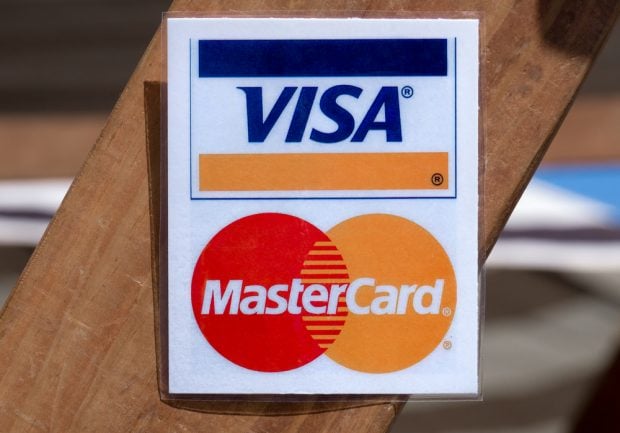 The past week was exciting and rewarding ascredit union executives and other industry professionals respondedto my opinions about overdrafts. The purpose of an editor's columnisn't to rah-rah the industry each week or to convince readers tosee things a certain way. Rather, it's to spur dialogue and debateon uncomfortable topics.
The past week was exciting and rewarding ascredit union executives and other industry professionals respondedto my opinions about overdrafts. The purpose of an editor's columnisn't to rah-rah the industry each week or to convince readers tosee things a certain way. Rather, it's to spur dialogue and debateon uncomfortable topics.
Judging from the response, overdrafts and their fees are veryuncomfortable topics for credit unions.
|I've learned a lot about overdrafts and the challenges creditunions face in processing transactions while maintaining compliancewith alphabet soup regulations. I especially enjoyed hearing fromEllen Drollette, CEO of the $6 million GP Community FCU inPlattsburgh, N.Y. Her insight into the challenges small credit unions face wasparticularly valuable.
|However, I also heard a lot of excuses from all across thecredit union community detailing why credit unions can't offeraccounts that won't overdraft.
|Nobody likes to be forced by the government to do anything. I agree the CFPB wantswhat's best for the consumer, financial institution operationalrealities be damned. But then again, seeing things through the eyesof the consumer is the bureau's job. It's a consumer protectionbureau, not a credit union protection bureau. Of course, the CFPBmust listen to credit unions and the NCUA to ensure it finalizesrules that don't create such a heavy burden, it harms consumersinstead of helps them.
|The CFPB hasn't required financial institutions to change howthey process overdrafts or structure overdraft protection servicesyet.
|However, there's a better reason than regulation that creditunions should modernize their checking accounts: Consumers expectit.
|I was stunned at how many readers commented about paper checksand balancing a checkbook register as if that's still the primarymethod consumers use to access funds. I'm sure credit unions stillprocess plenty of checks, but keep in mind the average member ageis much higher than most credit unions would like. As long ascredit unions see the world through old eyes, they'll never attractyoung ones.
|According to a 2014 Citibank survey – keep in mind this data isalready two years old – more consumers used online and mobilebanking to pay bills than checks. More than half of consumersavoided writing checks whenever possible and 12% didn't even own acheckbook. That percentage increased to 20% for consumers youngerthan 40 and 21% for all consumers with incomes of less than $30,000per year.
|I can't remember the last time I wrote a checkor saw anyone in a retail setting use one. I think the last time Iused a paper check to pay for something, it was a semester's worthof college tuition and it cost $500. Or maybe I was at the salongetting a spiral perm or at Blockbuster renting The Breakfast Clubon VHS.
|Okay, perhaps that's a bit snarky, but if you're targeting theunder-40 demographic, checks aren't going to cut it.
|How do millennials know how much money they have in theiraccounts? They open the app on their phone and check thebalance.
|Trying to convince millennials they need to learn how to writechecks and balance a register is like explaining why they need tolearn longhand cursive or read a map or wear a watch.
|It's kind of like when Gen Xers rolled our eyes back in the 80swhen lectured about the dangers of relying upon calculators insteadof mastering pencil-to-paper math. Why in the world would we needto learn long hand division, we wondered? What do you mean what ifI found myself without a calculator? That's ridiculous, I have oneright here on my watch.
|It doesn't matter if you don't like how the world is changing.It changes without your permission. These days, consumers canobtain pretty much anything they want, whenever they want it. Ifyou want to compete for their business, you need to accept that anddeliver.
|Members want what they want, not what credit unions tell themthey want. If your business model depends on fees from a serviceonly old people find valuable, your days are numbered.
|Yes, new account innovations are challenged by existing regs andyes, there are new and creative ways criminals can defraud them.But that's the thing about innovation – there are alwayschallenges.
|Accounts that don't overdraft aren't even that innovative;plenty of financial institutions and non-bank providers havealready blazed the trail. To help credit unions update theiraccount offerings, we've researched and published a list ofexisting accounts that don't overdraft, which can be found here. There's no need to reinvent the wheel– replicate what others are already doing. I bet credit unions canmake these accounts even better.
|Please keep the comments – cheers and jeers – coming. Both arevaluable and contribute to industry dialogue that ultimately makecredit unions more appealing to young members and ensure financialcooperatives have a future.
|Heather Anderson is executive editor of CU Times. She can bereached at [email protected].
Complete your profile to continue reading and get FREE access to CUTimes.com, part of your ALM digital membership.
Your access to unlimited CUTimes.com content isn’t changing.
Once you are an ALM digital member, you’ll receive:
- Critical CUTimes.com information including comprehensive product and service provider listings via the Marketplace Directory, CU Careers, resources from industry leaders, webcasts, and breaking news, analysis and more with our informative Newsletters.
- Exclusive discounts on ALM and CU Times events.
- Access to other award-winning ALM websites including Law.com and GlobeSt.com.
Already have an account? Sign In
© 2024 ALM Global, LLC, All Rights Reserved. Request academic re-use from www.copyright.com. All other uses, submit a request to [email protected]. For more information visit Asset & Logo Licensing.









